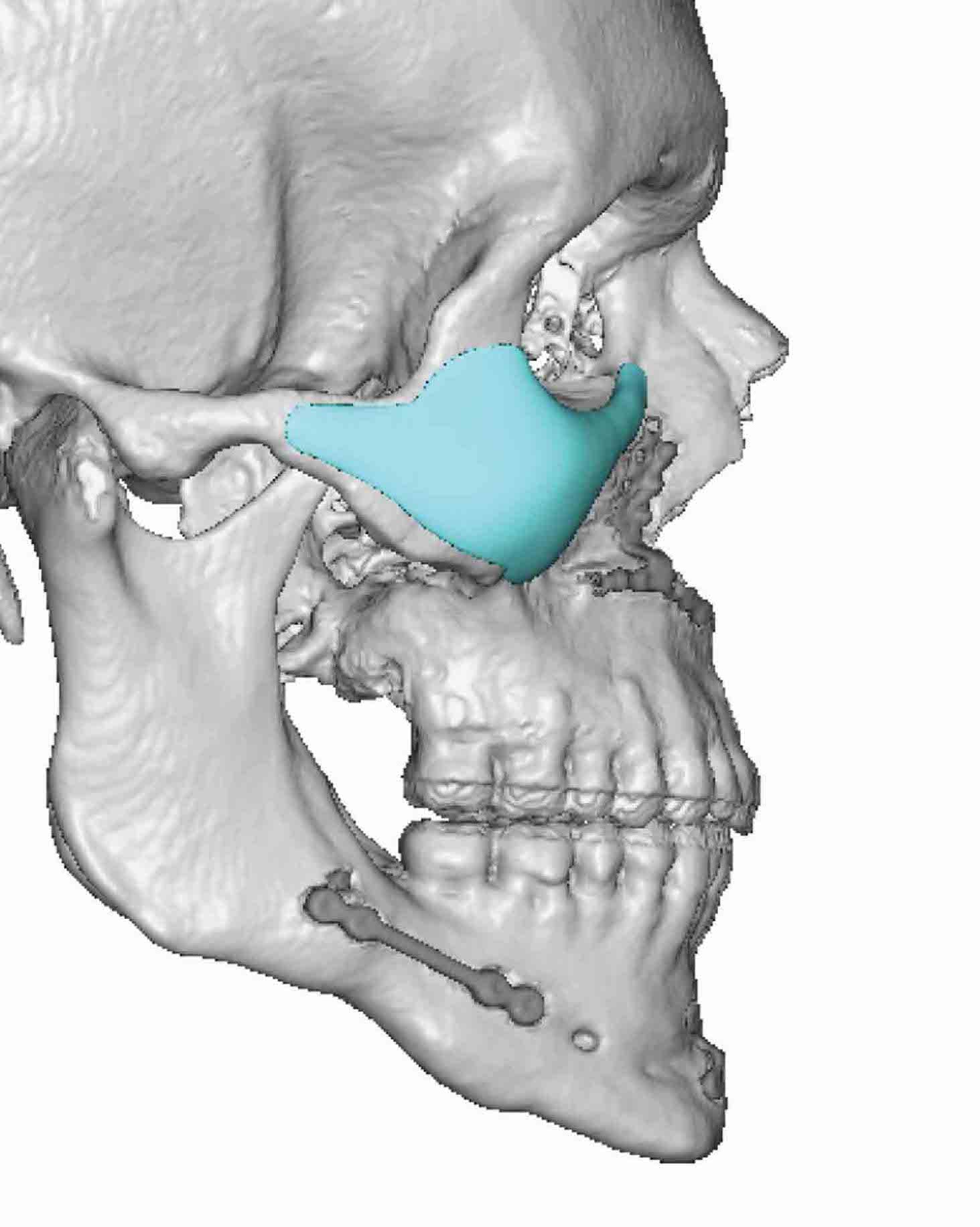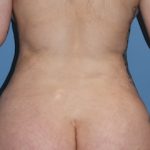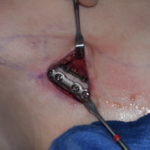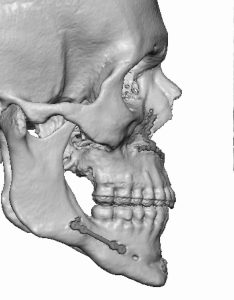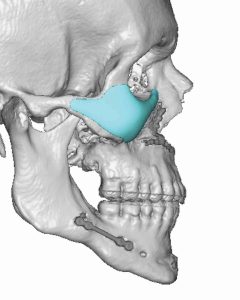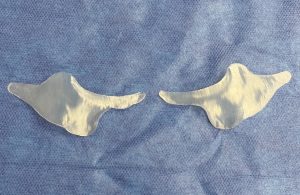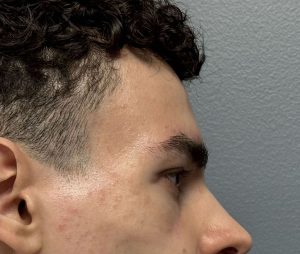Background: Bimaxillary or double jaw advancement surgery is a very effective procedure for obstructive sleep apnea in properly selected patients. By moving the maxillomandibular bony complex forward by a significant amount, usually 8 to 10mms, the nasal and oropharyngeal airway space is opened up for improved air flow. While functionally effective the tradeoff for such jaw movements is that what lies above the Lefort I osteotomy line will be aesthetically ‘left behind’. The infraorbital rims and zygomatic bones can often look deficient as a result creating undereye hollows and cheek flatness. This unintended effect will be even pronounced if the patient had lack of midface projection initially.
The definitive treatment for these upper midface bony deficiencies is onlay implant augmentation. There is no effective bony repositioning procedure. The complex surface anatomy of the upper midface can only be comprehensively augmented with an implant design if it is created from the patient’s 3D CT scan. When considering the implant design thought also has to be given to how the implants will be placed. (intraoral vs transpalpebral (lower eyelid) incisional approach) Each has their advantages and disadvantages.
The intraoral approach provide a scarless approach and uses an incisional scar that already exists.But its disadvantage is that getting an implant up and around the infraorbital nerve and onto the rim and out onto the cheeks can be challenging and risks an increased infection rate, permanent nerve numbness and implant malpositioning. Going through the lower eyelid lowers the risk of infection, assures better implant placement and minimizes the risk of any nerve injury. The key to the incisional approach is the implant design and how much of infraorbital rim augmentation is planned.
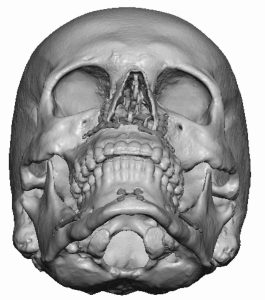
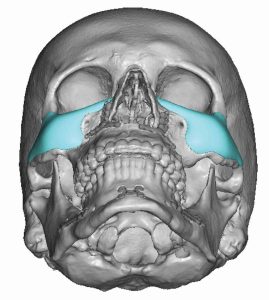
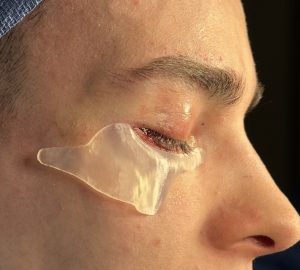
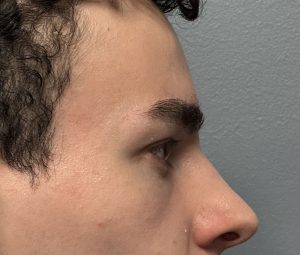
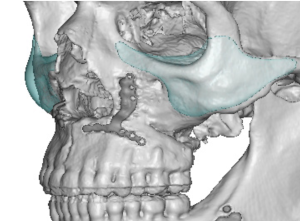
Key Points:
1) Major bimaxillary advancement surgery will leave the upper midface behind creating undereye hollows and cheek flatness.
2) Custom infraorbital-malar implants provide a partial aesthetic correction of the upper midface deficiency.
3) In designing custom infraorbital-malar implants for largely increased anterior projection the infraorbital component must saddle the rim to provide adequate forward projection.
Dr. Barry Eppley
World-Renowned Plastic Surgeon

